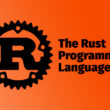Key Technologies Shaping UX/UI in Web Portal Development

A web portal for modern business is a mast have solution. It’s the face of your unique selling proposition, which with the help of UX/UI innovation sells your products or services, and without which your business doesn’t stand a chance. Think of the barbershop on the corner, your school’s fellow or business partners — the most successful ones listed have a web portal. To be sure: According to Forbes, 73% of small businesses already have a web portal, and by 2040, 95% of purchases will be made online. If you’re not already on the list of successful companies, you should consider working with a professional portal development company.
Alternative solutions:
- For new projects:
- Using open source software (Open Source) for UX/UI
- Using ready-made design templates (modules)
- For already launched projects:
- Implementation of gamification elements
- Prototyping and adaptive design can also alternatively help.
Skeptics point to the high cost of launching a new web portal and the difficulty of innovating an existing one. However, the example of Digiteum developers shows that there are affordable and workable solutions for innovative UX/UI integration to keep web portals competitive. Experts agree: even with a limited budget, the right innovations can be profitable. In this overview, we will take a look at the key technologies and tools that are setting the tone in the industry.
Modern technologies and tools in UX/UI
Digitalization rules: The integration of modern UX/UI technologies is a key success factor in web portal development. Artificial intelligence (AI), virtual (VR) and augmented reality (AR), as well as responsive design, improve interactivity and personalization of user experience. These technologies open up new ways to interact with content, making it more accessible and user-friendly. Details:
- Artificial intelligence (AI) and machine learning (ML) enable the creation of intuitive and personalized interfaces. They take into account previous user experiences to predict user behavior in the next iteration, offering them relevant content. Tools like Adobe Sensei use AI to automate routine tasks for designers, allowing them to focus on the conceptual aspects of a UX/UI project.
- Progressive Web Applications (PWAs) are web portals that offer a user experience comparable to native applications. Simple to complex: Imagine an application that is deployed not in the computer’s operating system, but in the browser as a web page. The advantage of such solutions is that they load quickly, work offline, and can send push notifications. This makes them an ideal choice for improving UX, especially in regions with slow internet speeds.
- Voice-activated interfaces (VUIs) and virtual assistants (VAs), such as Amazon Alexa and Google Assistant, are becoming increasingly popular as accompaniments to user experience. They offer a new way to interact with products through web portals, especially for people with disabilities or those who prefer voice control.
- Frameworks and libraries such as Angular, React, and Vue.js offer developers powerful tools for creating high-performance and adaptive web portals. They make it easier to create complex interfaces and increase the speed of development. Startups choose React and Vue.js for their ease of use and flexibility, while large corporations prefer Angular for its scalability.
It is worth listing, although not in detail, Adaptive Design, which has long been an integral part of modern UX/UI, as well as Animation and Microinteractions. The former allows web portals to display correctly on different devices, the latter add liveliness to web portals and helps the user understand how the interface works. Tools like Framer and Principle empower designers to create complex animations without having to write code. Rounding out the UX/UI workflow are user experience Testing and Analytics — the keys to understanding how users interact with web portals. Tools include Hotjar and Google Analytics provide valuable data to help improve UX. Companies that specialize in UI/UX development for web, native and cloud portals, such as Digiteum, play an important role in advancing UX/UI — revolutionizing the user experience.
Blockchain’s transformative role in UX/UI
To the innovations already mentioned, it’s worth adding two key technologies have a significant impact on UX/UI design. One is the Internet of Things (IoT), which allows everyday objects to connect to the internet and interact with each other. This expands the horizons for creating intuitive and user-friendly user interfaces, enriching the user experience. For those looking to tailor the digital interface of their smart homes, the team at Digiteum is equipped to assist.
The Blockchain deserves special attention as a technology has a significant impact on UX/UI design. It provides transparency in financial transactions and enhances the security of personal data. Due to decentralization, the blockchain reduces intermediation costs. Technologies like NFTs and smart contracts, along with the ongoing advancement of tools and methods, are shaping the future of UX/UI. Find out more on LinkedIn.
Summary
Innovative tools enhanced by AI capabilities reveal only the tip of the iceberg in UX/UI design. This industry is evolving so rapidly that not keeping up with innovations means being hopelessly late. Objections as technical and financial challenges may arise when implementing these innovations, but they are offset by lightweight and affordable alternatives: open source tools provide opportunities to optimize UX without significant costs. Successful practices of well-known companies show that even small UX innovations can lead to significant improvements in the user experience of a web portal. Take Unity, Meta (formerly Facebook), Snap — these companies demonstrate how the gradual introduction of cutting-edge technologies can significantly enhance the user experience, making their web portals more engaging and intuitive.
Companies specializing in web portal development, to minimize costs and simplify integration, recommend starting small, gradually introducing elements of artificial intelligence, VR/AR and responsive design. This approach empowers you to evaluate their impact on UX and adjust your web portal development strategy accordingly.
- What Is Rust Used For? A Guide to Its Applications - May 4, 2024
- Simplifying Video Editing: Creative Apps Like Kapwing - May 3, 2024
- Healthcare software: Exploring 10 essential types and their benefits - May 3, 2024








